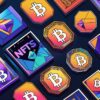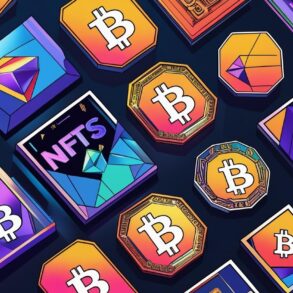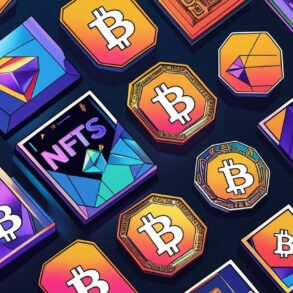The Web3 ecosystem is barely two decades old, Bitcoin’s first block with the famous embedded message “The Times 03/Jan/2009 Chancellor on brink of second bailout for banks” was mined in January 2009.
While there has been significant progress since then, one cannot help but notice that this new decentralized financial ecosystem could borrow a lot from the very system it was designed to replace. In fact, there are quite a number of notable instances that have proven Web3 indeed relies on the expertise from traditional teams in various fields such as finance, gaming and IT to move forward.
Of course, some Web3 diehards might argue otherwise, but looking at the most innovative developments so far, there is probably some input from a Web2 expert. From structuring Bitcoin Spot ETFs by tradfi experts in Wall Street to the building of next gen blockchain games by experienced game publishers such as the Funtico, which touts decades of expertise in game development.
This article will highlight the key areas where Web3 is already leveraging traditional technology experience; they include finance, gaming, art and entertainment.
Traditional Finance Meets Web3 Innovations
One of the crossover skills that seems to be already playing a fundamental role in shaping the future of Web3 is traditional finance. As of writing, there are quite a number of tailored financial crypto products that have been designed by some of the well known traditional asset managers and bankers.
A good example in this case would be crypto investment products such as Bitcoin ETFs; while BTC was accessible to anyone through exchanges prior to the approval, the expertise of firms such as Blackrock in structuring a spot ETF has attracted the much-awaited ‘institutional money’. This leading asset manager has an AUM of $17.24 billion, a significant amount given that Bitcoin Spot ETFs in the U.S. were only approved earlier this year.
It is also interesting to observe that some of the prominent figures in Web3 come from a finance background and have probably been leveraging their expertise on a daily basis. For example, Galaxy Digital Founder Mike Novogratz is a former partner at Goldman Sachs and Fortress Investment Group. Avanti Bank & Trust Founder Caitlin Long also worked as managing director at Morgan Stanley and Credit Suisse.
Experienced Game Publishers Setting the Stage in Web3
The Web3 gaming ecosystem is another niche that has undoubtedly benefited from the expertise and capital injections by traditional game publishers. Both Atari and Ubisoft have already made their debut into the Web3 gaming ecosystem, bringing the much needed expertise to create games that resonate with their already established user base.
Even more intriguing, there are Web3-focused gaming projects such as Functico which are taking the skill crossover to a whole new level. The team behind this project is building a full stack chain agnostic Web 3.0 gaming platform that will feature a Publisher-as-a-Service (PaaS) model, allowing Web2 game developers who are interested in Web3 to deploy games with ease.
Although still a relatively new Web3 gaming ecosystem, Funtico’s current gaming suite which includes a racing game ‘Formula Funtico’ and combat ‘Heroes of the Citadel’ is testament to the touch that Web2 game developers are bringing into the Web3 gaming experience. Instead of building games purely based on incentive models as was the case at the height of the NFT hype, traditional gaming experts are also paying attention to the most important aspect – the experience.
Art and Entertainment
NFT was the word of year in 2021 according to Collins dictionary; that’s how much crypto focused art was discussed during the previous bull run. But what actually drove this particular hype? Other than the speculative aspect of it, artists such as Beeple (Mike Winkelmann) had a huge role to play.
Beeple’s digital collection “Everydays: The First 5000 Days” sold for a whopping $69.3 million at a Christie’s auction. While one might be tempted to argue that Web3 did him a favor, it is also arguable that his breakthrough brought a lot of fresh perspectives in the NFT realm. This sale is what motivated more artists to share their work as NFT collections by listing them on decentralized marketplaces like OpenSea and Blur.
Another great artist that has sold their work in the form of NFTs include Damien Hirst, who is known for his contemporary work in conceptual art and installations. Both Beeple and Damien form part of the NFT success conversation; were it not for such creatives to share or monetize their work through blockchain, we probably would have never figured out the true value of integrating digital work or collections with borderless and on-chain economies.
Conclusion
Satoshi may have launched Bitcoin with the intention of doing away with Web2, but as time has proven, we can only do away with the infrastructure, not the expertise. Web3 currently needs experts from all traditional industries, whether IT, finance, healthcare, or supply chain. This will help developers and other major stakeholders to have a more informed perspective on what they are building or tap into already existing resources to structure more innovative products.
The most important thing is for experts across the divide to understand that it is not a zero-sum game between Web2 and Web3. The two iterations of the Web are intertwined, and the success of a decentralized future will depend heavily on tapping into the wealth of knowledge and experience that traditional industries bring to the table.
DisClamier: This content is informational and should not be considered financial advice. The views expressed in this article may include the author’s personal opinions and do not reflect The Crypto Basic opinion. Readers are encouraged to do thorough research before making any investment decisions. The Crypto Basic is not responsible for any financial losses.
This post was originally published on this site be sure to check out more of their content








